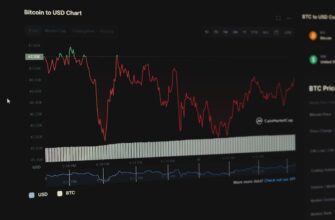- Why Day Trade SOL on Binance Using the 1-Hour Timeframe?
- Setting Up Your Binance Account for SOL Day Trading
- Key Indicators for 1-Hour SOL Trading
- Developing a SOL Day Trading Strategy on the 1-Hour Chart
- Risk Management for SOL Day Traders
- Common Mistakes to Avoid When Trading SOL on 1-Hour Charts
- SOL Day Trading on Binance: FAQ
- How much capital do I need to start day trading SOL?
- Which chart patterns work best for SOL on 1h?
- Should I use leverage for SOL day trading?
- How many SOL trades should I make daily?
- What time is best for trading SOL on 1h charts?
Why Day Trade SOL on Binance Using the 1-Hour Timeframe?
The 1-hour chart strikes an ideal balance for SOL day traders on Binance. Unlike shorter timeframes (like 5 or 15 minutes), it filters out market noise while providing enough signals for multiple daily entries. Solana (SOL) offers high volatility—fueled by its DeFi ecosystem and NFT trends—making it perfect for capturing 2-5% intraday swings. Binance’s deep liquidity ensures tight spreads, while features like stop-loss orders and real-time charting tools create a responsive environment for executing precise 1-hour strategies.
Setting Up Your Binance Account for SOL Day Trading
Optimize your Binance workspace before trading SOL:
- Enable Advanced Trading: Switch from “Basic” to “Advanced” mode for full charting tools.
- Customize Charts: Set default timeframe to 1h, add SOL/USDT pair, and apply TradingView indicators.
- Secure Funds: Use Binance’s “Withdrawal Whitelist” and two-factor authentication (2FA).
- Test First: Practice with spot trading and Binance’s demo feature before risking capital.
Key Indicators for 1-Hour SOL Trading
Combine these indicators to spot high-probability SOL setups:
- EMA Ribbon: Use 9, 20, and 50-period Exponential Moving Averages. Enter long when price crosses above all three; short when below.
- RSI (14-period): Identify overbought (70+) or oversold (30-) conditions for reversals.
- Volume Profile: Highlight high-volume nodes on Binance’s chart—SOL often rebounds at these levels.
- MACD Histogram: Watch for bullish/bearish divergences signaling momentum shifts.
Developing a SOL Day Trading Strategy on the 1-Hour Chart
Execute this step-by-step approach:
- Identify Trend: Determine direction using EMA alignment (e.g., sloping EMAs = uptrend).
- Wait for Pullbacks: In uptrends, buy SOL near support (e.g., 50 EMA or volume node). In downtrends, short at resistance.
- Confirm with RSI/MACD: Enter only if RSI exits overbought/oversold zones or MACD crosses signal line.
- Set Targets: Aim for 1:2 risk-reward ratios. Exit 50% at nearest resistance/support, trail stop-loss on remainder.
Risk Management for SOL Day Traders
Protect capital with these non-negotiables:
- Risk ≤1% of account per trade (e.g., $10 risk on $1,000 account).
- Always set stop-losses 2-3% below entry (adjust for SOL’s average true range).
- Trade only during high-volume periods: 00:00-04:00 and 12:00-16:00 UTC (aligns with US/Asia market overlaps).
- Daily loss limit: Stop trading after 3 consecutive losses or 5% account drawdown.
Common Mistakes to Avoid When Trading SOL on 1-Hour Charts
Steer clear of these pitfalls:
- Overtrading: Ignoring EMA trends to chase every minor SOL fluctuation.
- Ignoring Bitcoin Correlation: SOL often mirrors BTC. Check BTC’s 1h trend before entering.
- FOMO Entries: Buying SOL after +10% pumps without pullback confirmation.
- Neglecting News: Major Solana upgrades or exchange listings can override technicals—track announcements.
SOL Day Trading on Binance: FAQ
How much capital do I need to start day trading SOL?
Begin with at least $500 to manage risk effectively. This allows sensible position sizing while covering Binance’s 0.1% spot trading fee.
Which chart patterns work best for SOL on 1h?
Flags, triangles, and double tops/bottoms are highly reliable. SOL frequently forms these during consolidation phases between volatile moves.
Should I use leverage for SOL day trading?
Avoid leverage initially. SOL’s volatility amplifies liquidation risks. Master spot trading first, then consider ≤3x leverage only with strict stop-losses.
How many SOL trades should I make daily?
Quality over quantity. Aim for 2-4 high-conviction setups. Most profits come from 1-2 strong trend-aligned entries.
What time is best for trading SOL on 1h charts?
Focus on 00:00-04:00 UTC (Asian session) and 12:00-16:00 UTC (US morning). These windows see peak SOL volume and volatility on Binance.








